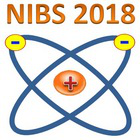Speaker
Dr
Daniele Aprile
(Consorzio RFX)
Description
During 2016, a joint experimental campaign was carried out by QST and Consorzio RFX on the Negative Ion Test Stand (NITS) at the QST Naka Fusion Institute, Japan, in order to validate some design solutions adopted in MITICA which is the full-scale prototype of the ITER NBI, presently under construction at Consorzio RFX, Padova, Italy.
The main purpose of the campaign was to test a novel technique, for suppressing the beamlet criss-cross magnetic deflection. This new technique, involving a set of permanent magnets embedded in the Extraction Grid, named Asymmetric Deflection Compensation Magnets (ADCM), is potentially more performing and robust than the traditional electrostatic compensation methods.
The results of this first campaign confirmed the effectiveness of the new magnetic configuration in reducing the criss-cross magnetic deflection. Nonetheless, contrary to expectations, a complete deflection correction was not achieved. By analyzing in detail the results, we found indications that a physical process taking place just upstream of the plasma grid was giving an important contribution to the final deflection of the negative ion beam. This process appears to be related to the drift of negative ions generated in the plasma source, in presence of magnetic field transverse to the extraction direction, and results in a non-uniform ion current extraction at meniscus.
Therefore, the numerical models adopted in the design was improved by including this previously disregarded effect, so as to obtain a much better matching with the experimental results. On this basis, new permanent magnets were designed and installed on the Extraction Grid of NITS. A second QST-Consorzio RFX joint experimental campaign was then carried out in 2017, demonstrating the complete correction of the criss-cross deflection and confirming the validity of the adopted solution and of the hypothesis behind the new models.
This contribution presents the results of the second joint experimental campaign on NITS along with the overall data analysis of both campaigns, and the description of the improved models. A general picture is given of the relation among magnetic field, beam energy, meniscus non-uniformity and beamlet deflection and divergence, constituting a useful database for the design of future machines.
Primary author
Dr
Daniele Aprile
(Consorzio RFX)
Co-authors
Dr
Antonio Pimazzoni
(Consorzio RFX)
Dr
Atsushi Kojima
(National Institute for Quantum and Radiological Science and Technology)
Dr
Carlo Baltador
(INFN-LNL)
Dr
Emanuele Sartori
(Consorzio RFX)
Dr
Gianluigi Serianni
(Consorzio RFX)
Prof.
Giuseppe Chitarin
(Consorzio RFX)
Dr
Junichi Hiratsuka
(National Institute for Quantum and Radiological Science and Technology)
Dr
Masafumi Yoshida
(Yamaguchi University)
Dr
Masahiro Ichikawa
(National Institute for Quantum and Radiological Science and Technology)
Dr
Mieko Kashiwagi
(National Institute for Quantum and Radiological Science and Technology)
Dr
Nicolò Marconato
(Consorzio RFX)
Dr
Pierluigi Veltri
(ITER Organization)
Dr
Piero Agostinetti
(Consorzio RFX)
Mr
Sylvestre Denizeau
(Consorzio RFX)

